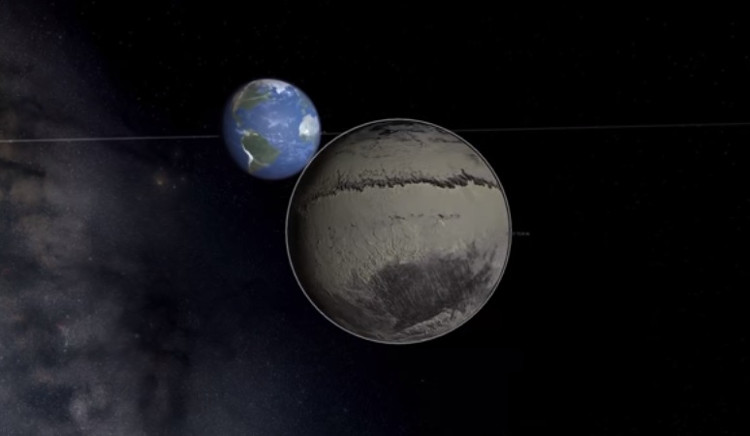Suddenly discovered a new moon in the Solar System
Scientists say the Hubble Space Telescope has discovered a new moon in our Solar System.
According to ScienceWorldReport, NASA / ESA Hubble Space Telescope has detected and identified a new moon surrounding the third largest dwarf planet known as OR10 in the Solar System. This dwarf planet is known as an object outside Hai Vuong Tinh (Trans-Neptunian, abbreviated as TN0) and it was previously thought that it has no moon.
Scientists have begun to think that dwarf planets may have a moon because it is rotating more slowly than we have seen through the Kepler telescope. This indicates that the moon can affect its rotation speed. They found that in 2007 OR10 needed about 45 hours to complete a rotation while normally this time was only about 24 hours.

The dwarf planet OR10 and its moon are located in the Kuiper belt.
Then scientists look at the images taken by the Hubble Space Telescope. They discovered that there is a moon in the image of dwarf planet OR10 through observations in 2009 and 2010. The problem is that the moon was initially unnoticed.
Csaba Kiss, an astronomer at the Konkoly Observatory in Budapest and the lead author of this study, said that scientists initially missed the moon in Hubble's image because it was very faint. They then use the dwarf planet's temperature measurements through the Herschel Space Observatory Observatory. They determined the diameter of this moon about 150 miles to 250 miles.
The team concludes that its planet and moon are located in the Kuiper belt , the remaining area freezing due to the solar system's shape 4.6 billion years ago. They claim that most dwarf planets in the Kuiper belt are larger than 600 miles. According to TeCake, discovering this moon satellite can help us better understand the development of satellites in solar systems.
- The moon was a piece of earth?
- Discover the oldest solar system outside the solar system
- 'Lava moon' discovered outside the Solar System
- Discovered 'super-Saturn' outside the Solar System
- Evidence of the first moon outside the solar system
- Unexpectedly the size of the largest Moon in the solar system
- The Solar System has never been this beautiful
- Surprise with a strange life on the new solar system discovered
- NASA announced a place that could exist in the solar system
- Discovery of the baby solar system record
- Believe it or not, there have been 2 Earths in the Solar System
- What will the sky look like if the Moon is replaced?
 Van Allen's belt and evidence that the Apollo 11 mission to the Moon was myth
Van Allen's belt and evidence that the Apollo 11 mission to the Moon was myth The levels of civilization in the universe (Kardashev scale)
The levels of civilization in the universe (Kardashev scale) Today Mars, the sun and the Earth are aligned
Today Mars, the sun and the Earth are aligned The Amazon owner announced a secret plan to build a space base for thousands of people
The Amazon owner announced a secret plan to build a space base for thousands of people This Abundant Mineral on the Moon Could Power Humanity for Thousands of Years
This Abundant Mineral on the Moon Could Power Humanity for Thousands of Years  The Strange Disease That Affects Everyone Who Has Ever Set Foot on the Moon
The Strange Disease That Affects Everyone Who Has Ever Set Foot on the Moon  What would a day on the Moon be like for astronauts?
What would a day on the Moon be like for astronauts?  First photo of Mars' strangely shaped moon
First photo of Mars' strangely shaped moon  The biggest supermoon of the year is about to light up the world's skies
The biggest supermoon of the year is about to light up the world's skies  New research shows that Earth has a new 'Moon'
New research shows that Earth has a new 'Moon' 